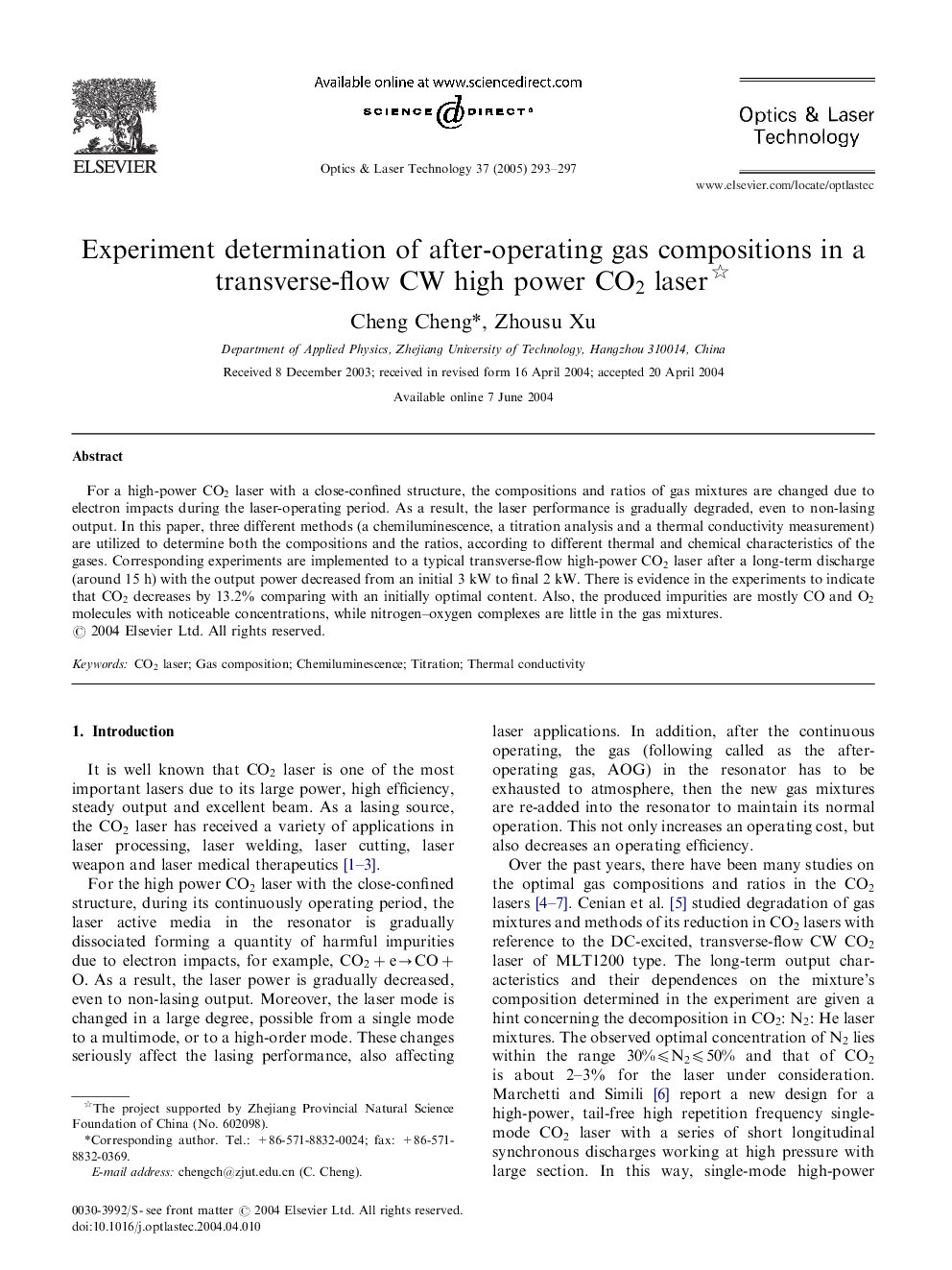| Article ID | Journal | Published Year | Pages | File Type |
|---|---|---|---|---|
| 10409831 | Optics & Laser Technology | 2005 | 5 Pages |
Abstract
For a high-power CO2 laser with a close-confined structure, the compositions and ratios of gas mixtures are changed due to electron impacts during the laser-operating period. As a result, the laser performance is gradually degraded, even to non-lasing output. In this paper, three different methods (a chemiluminescence, a titration analysis and a thermal conductivity measurement) are utilized to determine both the compositions and the ratios, according to different thermal and chemical characteristics of the gases. Corresponding experiments are implemented to a typical transverse-flow high-power CO2 laser after a long-term discharge (around 15h) with the output power decreased from an initial 3kW to final 2kW. There is evidence in the experiments to indicate that CO2 decreases by 13.2% comparing with an initially optimal content. Also, the produced impurities are mostly CO and O2 molecules with noticeable concentrations, while nitrogen-oxygen complexes are little in the gas mixtures.
Related Topics
Physical Sciences and Engineering
Engineering
Electrical and Electronic Engineering
Authors
Cheng Cheng, Zhousu Xu,
